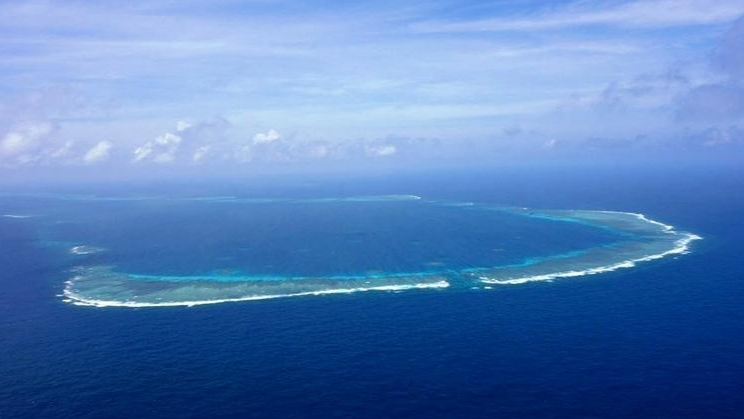
The South China Sea is the world's busiest, most prosperous and most open sea, with freedom of navigation and overflight for ships and aircraft fully guaranteed, a report released on Friday showed.
The report was released by the Beijing-based think tank South China Sea Strategic Situation Probing Initiative and focused on the navigation and overflight in the South China Sea.
According to the report, citing public statistics, nearly 500,000 commercial vessels pass through the South China Sea annually, with approximately 40 percent of global trade passing through the region and its adjacent straits.
In addition, over one million civilian aircraft flights operate in the skies above the South China Sea each year, it said.
READ MORE: China reiterates sovereignty over South China Sea islands
The report notes that in recent years, the United States has been advancing a strategy to contain China highlighting the South China Sea issue, intensifying some disputes in the region. However, the current disputes have not affected the freedom of navigation and overflight enjoyed by other countries in the South China Sea, the report stressed.
Overall, the interactions and encounters between the Chinese and US militaries in the South China Sea have been professional and safe, it showed, adding that the impact of geopolitical tensions on the freedom of navigation and overflight in the region remains within a "manageable range".
From a trade perspective, freedom of navigation and overflight in the South China Sea has not been threatened in any way, said Xu Bu, former president of the China Institute of International Studies.
However, he emphasized that from a military and security standpoint, the situation in the South China Sea is becoming "increasingly unstable, insecure and even dangerous" due to significant involvement from some non-regional countries, primarily the US.
Xu pointed out that US involvement includes continuously dispatching ships and aircraft to the region to demonstrate its military presence, provoking the sovereignty and territorial interests of the relevant countries, and vigorously hyping and demonizing China.
According to the report, the scale of military activities by nonregional countries, especially the US military, in the South China Sea is substantial.
The US Navy maintains approximately 1,600 ship-days of surface forces annually in the South China Sea, along with an unspecified number of submarine operations, and around 3,000 ship-days of auxiliary vessel activities.
A ship-day refers to one day of activity or deployment by a single warship in a specific area.
ALSO READ: Non-regional powers creating troubles in South China Sea
Last year, nearly 30,000 military aircraft sorties were conducted in the South China Sea. Among them, nearly 10,000 sorties were conducted by non-regional military aircraft, the majority — about 7,872 sorties — were by the US military.
"Through its military actions, the US has been hyping the issue of freedom of navigation, which in reality is an abuse of the rules of freedom of navigation to expand its influence and maintain its global hegemony and hegemonic interests," Xu said.
Additionally, the expert, who is also a member of the United Nations Secretary-General's High-Level Advisory Board, noted that certain regional countries, for their own selfish interests, attempt to provoke by aligning with non-regional powers to achieve their own goals.
"Countries around the South China Sea in the Asia-Pacific region should join hands and genuinely adhere to widely-recognized international law and the requirements of the Declaration on the Conduct of Parties in the South China Sea, resolving disputes through direct dialogue, consultation, friendly negotiation and peaceful means," he added.


